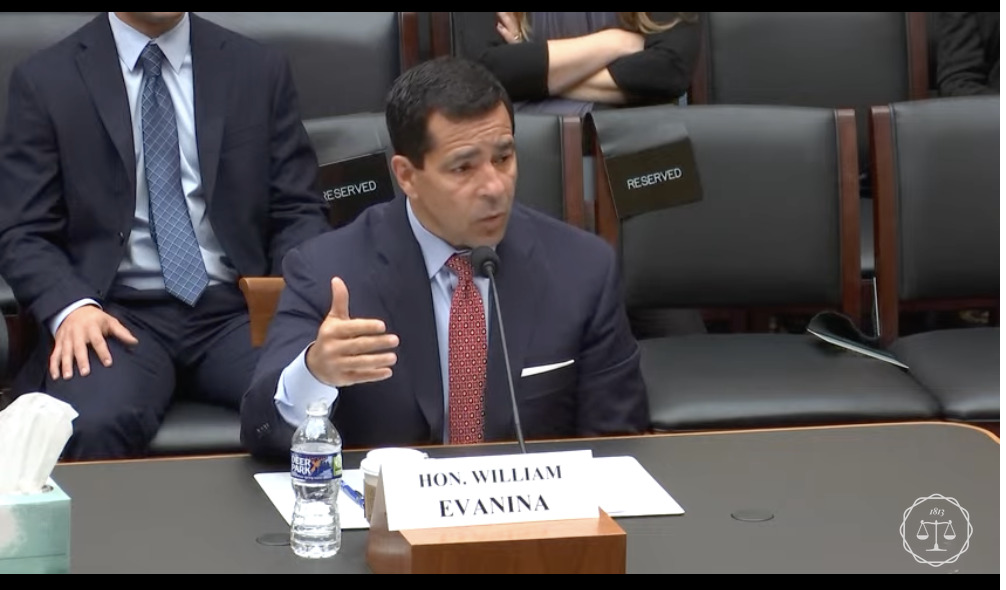Federal Circuit Changes Obviousness Test For Design Patents | Weintraub Tobin
In a recent en banc decision, the Federal Circuit Court of Appeals has overruled its prior test for nonobviousness of design patent inventions, holding that design patents are subject to the same test as utility patents. LKQ Corporation v. GM Global Technology Operations (Federal Circuit, May 21, 224).
The prior test for nonobviousness of a design patent, referred to as the Rosen-Durling test (based on the two Federal Circuit decisions), has been in effect since the 1990s. The Rosen-Durling test is a two-part test. In the first step, a primary reference (referred to as a Rosen reference), which has “basically the same” characteristics as the claimed design, considering the design as a whole, must be identified. If a Rosen reference exists, then the second step is an analysis of whether an ordinary designer would modify the Rosen reference to achieve the claimed design. If no Rosen reference can be identified, however, there is no second step, and the claimed design is nonobvious. If there is a Rosen reference, then step two is performed. Step two requires the existence of a secondary reference which is used to modify the primary reference to create the claimed design. The secondary reference must be “so related” to the primary reference that the features of one suggest the application of those features to the other.
In LKQ, the patent in issue was GM Global Technology’s design patent D797,625 for a vehicle front fender. LKQ filed a petition for inter partes review of the ‘625 patent. The Patent Trial and Appeal Board found that LKQ had not satisfied step one of the Rosen-Durling test because its primary reference was not “basically the same” as the claimed design.
LKQ appealed to the Federal Circuit Court of Appeals. LKQ argued that the Supreme Court’s decision in KSR. International Co. v. Teleflex Inc., 550 U.S. 398 (2007) had implicitly overruled the Rosen-Durling test, but the Federal Circuit panel found that it did not have clear direction from the Supreme Court as to the effect of KSR on design patents, as KSR involved utility patents, and therefore could not overrule the Rosen-Durling test. The panel of the court affirmed the PTAB’s decision.
LKQ requested a hearing en banc, which was granted. The full court vacated the panel’s decision and remanded the case to the PTAB.
The Federal Circuit reviewed the relevant patent laws. A design patent covers “a new, original and ornamental design for an article of manufacture.” 35 U.S.C. section 171(a). The patent laws pertaining to utility patents also apply to design patents. Section 171(b). Under section 103, an invention is obvious “if the differences between the claimed invention and the prior art are such that the claimed invention as a whole would have been obvious ….. to a person having ordinary skill in the art…” In Graham v. John Deere Co., 383 U.S. 1 (1966), the Supreme Court held that the determination of obviousness requires four sets of factual findings: (1) the scope and content of the prior art; (2) the differences between the prior art and the claims; (3) the level of ordinary skill in the art; and (4) secondary considerations such as commercial success, long felt but unsolved needs, the failure of others, copying by others, and industry praise. Once these factors have been identified, then the question of whether the claimed invention is obvious over the prior art can be analyzed. In KSR, the Supreme Court ruled that the Graham factors should be applied flexibly and that “rigid preventative rules that deny factfinders recourse to common sense” are improper, and that the “obviousness analysis cannot be confined by a formalistic conception.”
Based on the Supereme Court’s decisions, the Federal Circuit overruled the Rosen and Durling cases. The court held that the Rosen-Durling test “does not adequately align with KSR …. and other precedent …. and is out of keeping with the Supreme Court’s general articulation of the principles underlying obviousness, as well as its specific treatment of validity of design patents.” The court found that the Rosen-Durling requirements — that the primary reference be “basically the same” as the claimed design and that the secondary reference be “so related” to the primary reference that the features of one suggest application to the other — “are improperly rigid.” The court emphasized that KSR requires “a more flexible approach than the Rosen-Durling test.”
The court further held that the determination of obviousness of a design patent must be based on the same factors as an applied to utility patents. According to the court, the Graham analysis should be used, although the court left it to “future cases to further develop the application of this standard.”
GM and various amici argued that overruling the Rosen-Durling test would result in uncertainty for all design patents. The federal circuit disagreed:
“The Graham four-part obviousness test for utility patents has existed for a very long time and there is considerable precedent from which the PTO and the courts can draw when assessing obviousness in the design patent context. …. This test has proven, workable for utility patents and we see no reason why it would not be similarly workable for design patents. As with any change, there may be some degree of uncertainty for at least a brief period, but our elimination of the rigid Rosen-Durling test is compelled by both the statute and Supreme Court precedent.”






